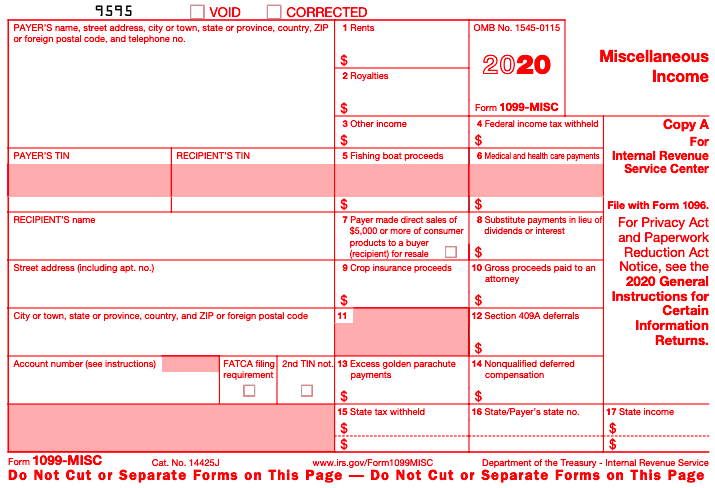As an Asian person living in the United States, I understand the importance of staying updated with tax forms and regulations. The year 2020 brought about significant changes in tax reporting, particularly with the introduction of the new 1099-NEC form. In this post, we will explore what the 1099-NEC form is, its significance for business owners, and how to properly fill it out.
What is a 1099 Form?
 The 1099 form is a series of documents that the Internal Revenue Service (IRS) uses to track and report income earned by individuals other than employees. Independent contractors, freelancers, and self-employed individuals receive these forms to report their income from various sources.
The 1099 form is a series of documents that the Internal Revenue Service (IRS) uses to track and report income earned by individuals other than employees. Independent contractors, freelancers, and self-employed individuals receive these forms to report their income from various sources.
The Introduction of 1099-NEC
 For the tax year 2020, the IRS reintroduced the 1099-NEC form, which stands for Non-Employee Compensation. Previously, businesses used the 1099-MISC form to report non-employee compensation. However, starting from 2020, income earned by non-employee workers should be reported on the 1099-NEC form.
For the tax year 2020, the IRS reintroduced the 1099-NEC form, which stands for Non-Employee Compensation. Previously, businesses used the 1099-MISC form to report non-employee compensation. However, starting from 2020, income earned by non-employee workers should be reported on the 1099-NEC form.
The reintroduction of the 1099-NEC form allows for clearer reporting and separates non-employee compensation from other types of income reported on the 1099-MISC form. This change ensures more accurate and organized reporting of income for tax purposes.
Importance for Small Business Owners
Small business owners play a crucial role in the economy, and it’s important for them to understand the significance of the 1099-NEC form. If you are a business owner who hires independent contractors or freelancers, you need to issue a 1099-NEC form if you paid them more than $600 during the tax year.
The 1099-NEC form helps the IRS keep track of income earned by non-employees, ensuring that these individuals are reporting their income and paying the appropriate taxes. By providing accurate information on the 1099-NEC form, small business owners contribute to the overall transparency and integrity of the tax system.
Filling Out the 1099-NEC Form
Filing the 1099-NEC form can seem daunting at first, but it is relatively straightforward once you familiarize yourself with the process. Here are the steps to properly fill out the form:
- Gather the necessary information: To accurately fill out the 1099-NEC form, you will need the recipient’s name, address, and tax identification number (TIN) or Social Security Number (SSN).
- Complete the payer details: Provide your business’s name, address, and Employer Identification Number (EIN) on the form.
- Enter the payment details: Report the total amount you paid to the recipient during the tax year in Box 1 of the form.
- Submit the form to the IRS: Provide a copy of the filled-out form to the recipient by January 31st of the following year. Additionally, you must file Copy A of the form with the IRS by the end of February if you are submitting it on paper or by the end of March if you are submitting it electronically.
 It is important to note that failure to properly file the 1099-NEC form or issue it to the recipient on time can result in penalties from the IRS. Therefore, it is crucial to be diligent and thorough when completing and submitting this form.
It is important to note that failure to properly file the 1099-NEC form or issue it to the recipient on time can result in penalties from the IRS. Therefore, it is crucial to be diligent and thorough when completing and submitting this form.
Conclusion
As the new 1099-NEC form replaces the 1099-MISC form for reporting non-employee compensation, small business owners must stay informed about this change. By understanding the purpose of the 1099-NEC form and following the correct procedures for filling it out, business owners can ensure compliance with IRS regulations and maintain the integrity of the tax system.
Remember, staying up-to-date with tax forms and regulations is essential for all individuals, regardless of their background. Whether you are an Asian person, an immigrant, or a U.S. citizen, fulfilling your tax obligations is a key responsibility that contributes to the functioning of society as a whole.
So, if you are a small business owner who hires independent contractors or freelancers, make sure to familiarize yourself with the 1099-NEC form and its requirements. By doing so, you can navigate the tax landscape successfully and ensure the accurate reporting of income for both your business and your contractors.